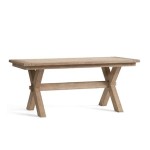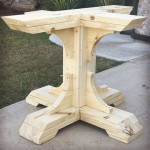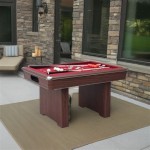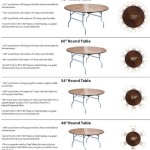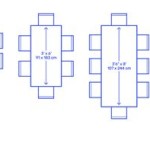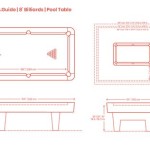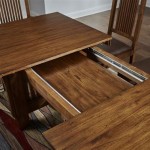Baby-Safe Coffee Tables: A Guide to Choosing a Safer Option for Your Home
The introduction of a baby into a household necessitates a reevaluation of the environment from a safety perspective. Furniture, specifically coffee tables, presents a potential hazard to infants and toddlers due to their height, sharp edges, and materials. Choosing a baby-safe coffee table involves considering various factors to minimize the risk of injury and create a safer living space.
Conventional coffee tables often feature sharp corners, hard surfaces, and materials that may release harmful chemicals. These attributes can pose dangers to crawling, toddling, and exploring infants. Understanding the potential risks and available safety features is crucial for making an informed decision when selecting a coffee table for a home with young children.
Assessing Potential Hazards of Standard Coffee Tables
Standard coffee tables, designed primarily for aesthetic and functional purposes, rarely prioritize child safety. The potential dangers associated with these tables can be categorized into several key areas.
Sharp Edges and Corners: This is perhaps the most obvious hazard. Sharp edges and corners can cause cuts, bruises, and more serious injuries if a child falls or bumps into them. Even a minor tumble can result in a significant injury due to the impact force concentrated on a small area. Traditional rectangular or square coffee tables are particularly problematic in this regard.
Hard Surfaces: Coffee tables are typically made from materials like wood, glass, or metal. These surfaces offer minimal impact absorption, increasing the risk of head injuries if a child falls and hits their head. The hardness of the surface exacerbates the impact and can lead to concussions or other trauma.
Height and Stability: The height of a coffee table, typically between 16 and 20 inches, is ideal for a baby or toddler to reach and potentially pull themselves up on. If the table is not stable, it could tip over, causing injury. Furthermore, if the table is too heavy for a child to move, they could become trapped underneath it.
Materials and Construction: Some coffee tables are constructed with materials that may contain harmful chemicals, such as formaldehyde in pressed wood or lead in paint finishes. Infants and toddlers often explore their environment by putting objects in their mouths, increasing the risk of ingesting these chemicals. The construction methods, such as the use of screws or staples, can also present hazards if they become loose or exposed.
Under-Table Storage: Coffee tables with shelves or drawers offer storage space, but these features can also pose risks. Children may attempt to climb onto the shelves, causing the table to tip over. Drawers can pinch fingers or contain small objects that present a choking hazard.
Key Features of a Baby-Safe Coffee Table
A baby-safe coffee table prioritizes minimizing potential risks and creating a safe environment for infants and toddlers. These tables often incorporate specific design elements and materials to address the hazards associated with standard coffee tables.
Rounded Edges and Corners: This is the most critical safety feature. Replacing sharp corners with rounded edges significantly reduces the risk of cuts and bruises. Oval or round coffee tables are generally considered safer than rectangular or square ones. Even with rounded corners, it's advisable to consider edge guards for added protection, especially during the early stages of crawling and walking.
Soft or Padded Surfaces: Opting for a coffee table with a soft or padded surface, such as one made with upholstered fabric or a thick layer of foam, provides better impact absorption and reduces the risk of head injuries. These surfaces cushion falls and minimize the force of impact.
Stable and Lightweight Design: A baby-safe coffee table should be stable enough to withstand a child pulling themselves up on it but also lightweight enough to prevent serious injury if it does tip over. A wide base and low center of gravity contribute to stability. Avoid tables with a top-heavy design.
Non-Toxic Materials: Choosing a coffee table made from non-toxic materials is essential. Look for certifications such as GREENGUARD Gold, which indicates that the product has been tested for low chemical emissions. Solid wood with a natural oil finish or water-based paint is a safer alternative to pressed wood or furniture with chemical-laden finishes.
Absence of Small Parts: A baby-safe coffee table should be free of small, detachable parts that could pose a choking hazard. Avoid tables with decorative elements that could easily come loose, such as knobs, handles, or trim.
Height Considerations: While the standard coffee table height ranges from 16 to 20 inches, a slightly lower table is generally safer for young children. A lower height reduces the distance a child will fall if they trip or lose their balance.
Materials and Design Alternatives for Enhanced Safety
Beyond the basic safety features, considering alternative materials and design styles can further enhance the safety of a coffee table in a home with young children. These alternatives address specific risks and offer additional protective measures.
Upholstered Ottomans as Coffee Tables: An upholstered ottoman can serve as a functional and safe alternative to a traditional coffee table. Ottomans typically have rounded edges and soft, padded surfaces, minimizing the risk of injury. They can also be easily moved out of the way when not in use.
Rubber or Foam Edge Guards: Regardless of the coffee table's construction, applying rubber or foam edge guards to corners and edges provides an extra layer of protection. These guards cushion impacts and prevent cuts and bruises. They are readily available in various shapes and sizes and can be easily attached and removed.
Acrylic Coffee Tables: Acrylic coffee tables, made from a type of plastic, can offer a safer alternative to glass. Acrylic is less likely to shatter than glass and can be molded into rounded shapes. However, it's essential to ensure that the acrylic is non-toxic and free of harmful chemicals.
Collapsible or Folding Coffee Tables: A collapsible or folding coffee table can be easily stored away when not in use, minimizing the risk of injury when children are playing. These tables are particularly useful in smaller spaces where space is limited.
DIY Solutions: Creating a DIY coffee table solution can allow for complete control over the materials and design. Building a simple wooden table with rounded edges and a non-toxic finish can be a cost-effective and safe alternative. Additionally, repurposing existing furniture, such as a sturdy storage chest, can provide a safe and functional option.
Glass Alternatives: If a glass-topped coffee table is desired, tempered glass is a safer option than standard glass. Tempered glass is designed to shatter into small, blunt pieces rather than sharp shards, reducing the risk of serious injury. However, even tempered glass can still pose a hazard, so it's advisable to consider alternatives.
Regular Inspections and Maintenance: Regardless of the type of baby-safe coffee table chosen, regular inspections and maintenance are crucial. Check for loose screws, splinters, or other potential hazards. Promptly repair any damage to ensure the table remains safe for children.
Creating a baby-safe environment requires careful consideration of all potential hazards, and coffee tables are a significant factor. By understanding the risks associated with standard coffee tables and prioritizing safety features, parents and caregivers can make informed decisions to protect their children from injury. Implementing these strategies contributes to a safer and more comfortable living space for infants and toddlers to explore and grow.

Best Kid Friendly Coffee Tables Family Home Decorating Ideas

Best Kid Friendly Coffee Tables Family Home Decorating Ideas

Pin On Best Of Kate Decorates Blog

9 Kid Friendly Coffee Tables How To Style Them Shades Of Blue Interiors

Kid Friendly Coffee Tables Jess Klein Studio

The 25 Best Kid Friendly Coffee Tables

9 Kid Friendly Coffee Tables How To Style Them Shades Of Blue Interiors
Coffee Tables Safe For Baby On The Move Charleston Home

Pin On Home
Baby Proofing Your Stylish Living Room Oh Joy
Related Posts

